Introduction: Japanese dog breeds

The Japanese word for dog is “Inu (Japanese: 犬).” Inu is an integral part of Japanese culture and has some of the oldest dog breeds in the world. Some experts believe, the domestication of dogs began in 10,000 BC in Japan.
Tokugawa Tsunayoshi, the fight shogun of Japan, has the nickname “the dog shogun” (Japanese: Inu-Kubō 犬公方) for instituting laws to protect dogs.
One cannot forget the story of Hachiko, a Japanese Akita. Every day for nine years, this loyal dog would return to the Shibuya Station to await its master’s return. Sadly, Hachiko’s master passed away while at work. This faithful dog continued to wait until its eventual death.
History of dogs in Japan
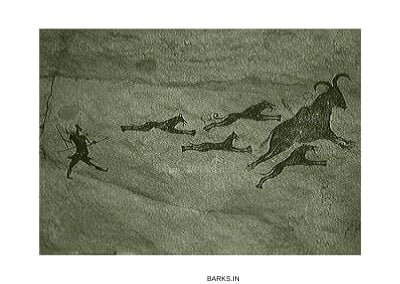
The history of dogs in Japan dates back to the Jomon period. Experts believe that the dogs, along with the Jomon people, reached Japan 10,000 to 12,000 years ago. Archaeological excavations found dog-skeletal remains that date back to this ancient time.
Jomon people lived along with their dog’s hunting and gathering. The dogs that these people owned were small, their skull roughly similar to Shiba Inus. Experts believe that this early dog is the ancestor to many Japanese dogs that we see today.
In the 18th century, dogs from the West started arriving in Japan. The influx of dogs from the West resulted in cross-breeding with native dogs. In the early 19th century, efforts were made by the Japanese to protect the native dogs. Native dogs such as the Akita, Kishu, and Kai were declared protected by law. Today some of these magnificent dogs are fully restored with healthy genetic diversity.
Native Japanese Dogs and their ancestors
| Breed | Ancestor |
|---|---|
 Modern Akita Inu |  Matagi Inu |
 Ancient Akita Inu |  Nambi Inu |
| Kouyasu Inu | |
| Iiyama Inu | |
 Togou | |
 Shiba Inu | Shinshu Shiba |
| Mino Shiba | |
| Sanin Shiba | |
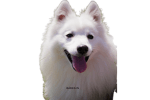 Japanese Spitz | 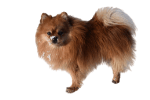 German Spitz |
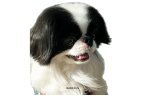 Japanese Chin | 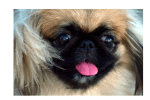 Pekingese |
 Shikoku Inu | 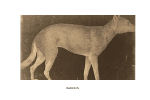 Honsuh Wolf |
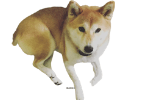 Sanshu Inu |  Chinese Chow Chow |
 Akita Inu | |
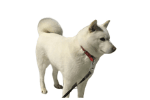 Hokkaido Inu |  Matagi Inu |
 Kishu Ken |  Honsuh Wolf |
 Kai Ken | Nihon Ken |
 Matagi Inu | |
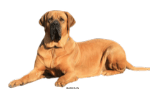 Tosa Inu |  Old English Bulldog |
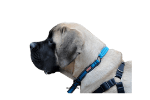 English Mastiff | |
 Saint Bernard | |
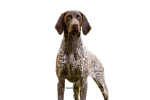 German Pointer | |
 Pitbull Terrier | |
 Japanese Terrier |  English Fox Terrier |
 Ryukyu Inu |  Honsuh Wolf |
 Sakhalin Husky |  Siberian Wolf |
Akita Inu
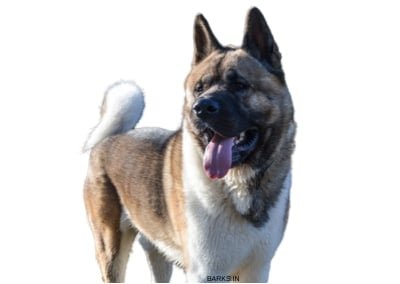
Akita Inu (Japanese: 秋田犬) is a large breed of dog from Japan. Akita is the most famous Japanese dog in the world. This dog was made famous by a dog named Hachiko.
The Akita Inu is a Spitz-type dog with straight double-coat. This dog is dominant, aloof, and independent. Akita’s are not for novice dog owners, and they require consistent leadership to be properly socialized. This dog ranks 11th in our list of most dangerous dogs in the world.
There are two strains of the Akita, the Japanese and the American. The American Akita is bigger than the Japenese variant.
After world war II the Akita population was decimated, and only a few remained. With wartime restrictions, people cross-bred these dogs with German Shepherds, thus losing their genetic purity. Japanese experts don’t regard the American Akita to be pure.
History and Origin

The Akita is an ancient breed of dogs. Experts estimate this dog to be more than 1000 years old. They derive their name from the mountainous Akita prefecture on Honshu.
Dog-fighting was prevalent in Japan in the 1600s. Akita, due to its large size and dominant character, was one of the preferred breeds. In the early 1900s, Japan opened its doors to the West. German Shepherds, Mastiffs, and other large breeds found its way into Japan.
People started cross-breeding these dogs with native Japanese dogs, such as the Akita. Soon the genetic purity of Akita was lost, and the breed began to decline.
The Akita lost its Spitz look and soon appeared with long straight tails and loose skin. In the late 1920s, efforts began towards the restoration of the Akita. Breeders used Matagi, a native hunting dog, to restore the Spitz characteristics.
The Akita reached the American shore before the restoration. Hence in Japan, the American Akita is not considered genetically pure. The AKC registers both American and Japanese as a single dog and allows cross-breeding. The Japan Kennel Club considers these dogs to be distinct.
The purpose of Akita
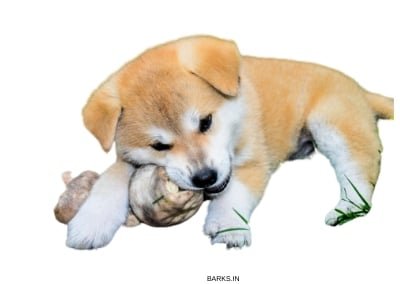
Akita’s are a versatile dog, and throughout history, they fulfilled multiple roles.
Hunting dogs
In ancient times, Akitas were hunting dogs, accompanying its master, and helping them in hunts. Akita’s sturdy build, sharp senses, and excellent adaptation to cold weather enabled hunters to be successful in hunts.
Also, the Akita Inu has a high prey drive. They remain focused throughout the hunt.
Dogfights
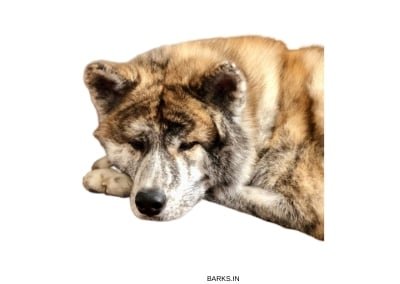
In the 1600s, dog fighting was a popular but bloody sport in Japan. Akita’s were the breed of choice, due to its dominant character, large size, and sturdy build.
Guard dogs

Akita’s are independent, naturally wary of strangers, and have excellent senses. These traits make these excellent guardians for home and property.
Companion dogs
Today the Akita takes the role of a loyal companion dog. Their smart looks, intelligence, and loyalty have made these dogs famous.
Traits
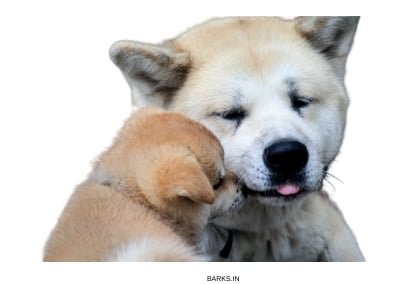
- Classification: American Kennel Club (AKC) – Working; UKC- Northern Group
- Weight: 32 kg to 45 kg
- Height: 66 cm to 71 cm
- Coat: Medium, double-coat
The Akita is a large breed of Spitz dogs. They originate from cold mountainous regions of Japan. Hence, they are well-suited for cold climates. Akita has a double coat. The outer-coat is medium-sized, and the inner-coat is dense and water-resistant.
Health
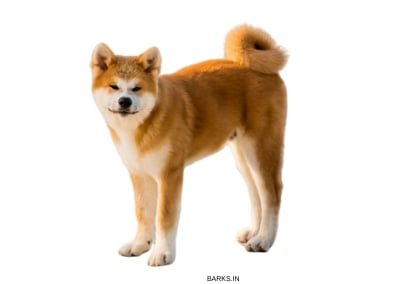
Akita is prone to several ailments such as.
- Akita is prone to several Autoimmune diseases such as Autoimmune hemolytic anemia, Sebaceous adenitis, etc.
- Hypothyroidism affects the dog’s thyroid gland.
- Akita’s are sensitive to several vaccines and drugs. Experts believe that this is due to its remote origins.
Interesting facts

- Hachiko is the most famous Akita. This dog waited in the railway station for nine years, every day, for its master to return.
- Helen Keller, on her visit to Japan, was impressed by the Akita Inu. She has the distinction of introducing the Akita’s into the US.
- Vladimir Putin, the Russian president, owns an Akita, which he calls Yume.
Shiba Inu
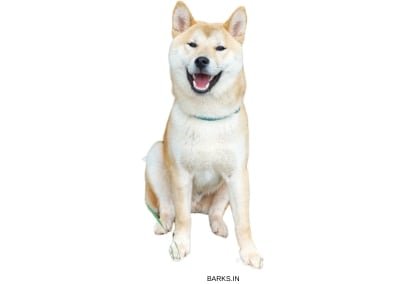
The next dog in our list of Japanese dog breeds is the beautiful Shiba Inu. Shiba Inu (Japanese: 柴犬) is a small-to-medium-sized hunting dog from Japan. The word Shiba is Japanese refers to brushwood, and Inu means a dog. The Shiba Inu is a reference to this dog’s hunting ancestry.
The Shiba Inu looks similar to the Akita, and the Hokkaido. However, this is a distinct breed dog with a separate bloodline.
History and Origin

The Shiba Inu originates from the mountainous regions of the Chūbu. This dog is another ancient breed of Japanese dogs that predates most modern dogs.
When the non-native dog breeds entered Japan, crosses of Shiba Inu with dogs from the West became famous. This cross-breeding wiped out a majority of the Shiba Inu population.
In 1928, breeders and hunters joined to restore this dog and protect its genetic purity. Despite their valiant efforts, world war decimated this breed. Food shortages and canine distemper pushed them towards extinction.
After the war, breeders combined three distinct bloodlines to bring this dog back. These were
- Shinshu Shiba
- Mino Shiba
- San’in Shiba
Today, this dog enjoys a secure future. All major Kennel Clubs recognize this dog.
The purpose of the Shiba Inu
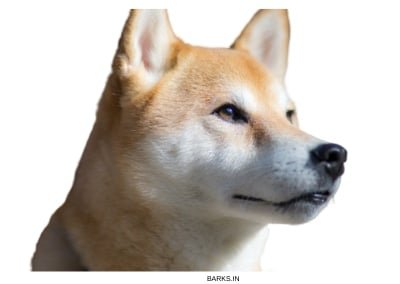
The Shiba Inu is a medium-to-small breed for dogs from Japan. They are compact, intelligent, and have excellent senses.
Hunting dog
The Shiba Inu is a hunting dog that excels in flushing out game hidden in bushes. Many believe this dog’s name Shiba Inu (meaning little brushwood dog), refers to its original purpose, hunting.
Companion dog
The Shiba Inu is an excellent companion. They are alert, beautiful, and have a good nature. The Shiba Inu forms long-lasting bonds with the members of its family.
Another remarkable trait is that this dog keeps itself clean. These dogs are similar to cats, often seen licking their coats clean.
Traits

- Classification: AKC – Non-sporting; UKC- Northern Group
- Weight: 8 kg to 10 kg
- Height: 35 cm to 43 cm
- Coat: Medium, double-coat
The Shiba Inu is loyal, independent, and alert. These dogs are compact with good muscle development. Square-shaped, erect ears, and curved tail are the hallmarks of this dog.
They have double-coat, the outer is stiff and straight. The inner coat is dense and fluffy. These dogs use their tail to protect themselves from the cold weather. When sleeping, the dog curls its tail and buries its face beneath it.
Temperament

The Shiba Inu is a high-spirited dog. Being a hunter, these dogs have remarkable courage and will stand its ground, despite the danger. They are fiercely protective of their family and form long-lasting bonds with family members.
Health
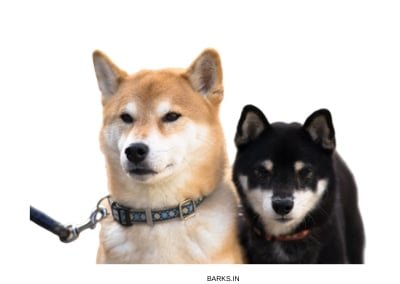
The Shiba Inu is a generally healthy dog. The average life span of this dog is between 12 to 15 years. The oldest dog lived for 26 years. The following are some of the ailments.
- Hip dysplasia is a painful condition that affects the dog’s back.
- Entropion is a condition that causes the eyelids to fold inward, causing discomfort to the dog.
The most famous Japanese Shiba Inu – Kabosu

Kabosu is the most famous Japanese dog, made famous through memes. This dog became so renowned that a meme-based cryptocurrency, dogecoin is in use today.
Kabosu belongs to a 51-year-old kindergarten teacher, Atsuko Sato. This teacher unwittingly posted some cute pictures of her dog, which became memes.
Interesting facts
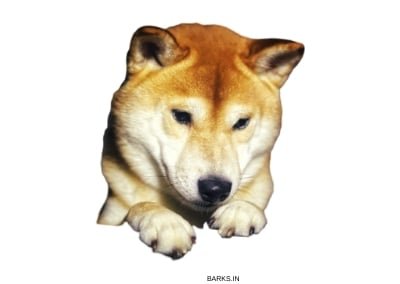
- The Shiba Inu has three different variants. However, all major Kennel Clubs register this dog as a single breed. The variants are
- Shinshu Shiba
- Mino Shiba
- San’in Shiba
- When the dog gets excited, they are known to scream.
- The Shiba Inu has a natural temperament. They are a spirited dog that is almost wild.
The Japanese Spitz
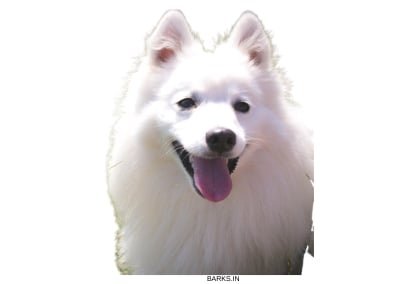
The Japanese Spitz (Japanese: 日本スピッツ, Nihon Supittsu) is another remarkable dog from Japan. They are a small breed of Spitz-type dog that excels as a family companion.
The Japanese Spitz is a modern breed of dog developed in the 1920s. This dog is a descendant of the Pomeranian dog and the German Spitz. The Japanese Spitz looks similar to the Indian Spitz, and both share a common ancestor.
History and Origin
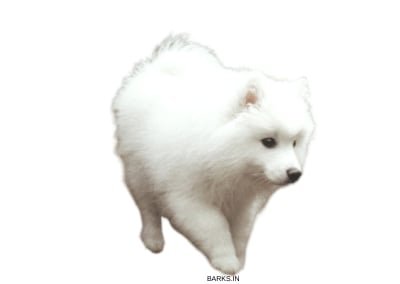
In the early 1920s, Japan opened its doors to the world. Dogs from across the world started arriving in the Japanese shores. Dog breeders in Japan combined Pomeranians with other Spitz-type dogs, such as the German Spitz, to develop this breed.
After several generations for selective breeding, the Japanese Spitz today is a distinct breed.
The purpose of the Japanese Spitz
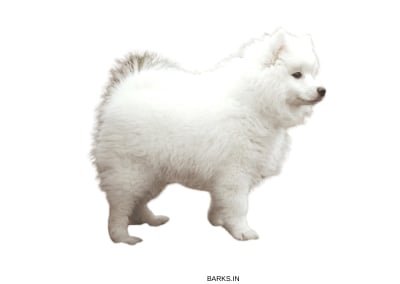
The Japanese Spitz dog combines the best qualities of several small Spitz-type dogs.
Companion Dog
The original intent of the breeders was to combine excellent qualities of the Spitz-type dogs. They combined the Pomeranian with the German Spitz from China to create this breed.
The Japanese Spitz is an excellent companion, alert, delightful, and loyal. This dog has an excellent temperament and is good with kids.
Indoor Guard
The Japanese Spitz is energetic, alert, and has a sharp bark. These traits make them excel as indoor guardians. Not known for being sleepy or lazy but are alert and energetic.
Traits
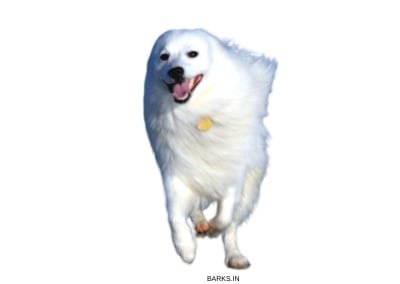
- Classification: AKC – Unrecognized, FSS; UKC- Northern Group
- Weight: 5 kg to 10 kg
- Height: 35 cm to 40 cm
- Coat: Straight, double-coat
The Japanese Spitz is a modern Japanese breed of dog. They are a small breed, weighing less than 10 kg. Pure white, straight long outer fur with a dense undercoat and muzzle with short hair are the hallmarks of this breed.
Japanese Spitz’s fur requires daily grooming and is prone to mats and tangles. This dog occurs only in pure-white color.
Temperament

The Japanese Spitz is a good-natured dog that is excellent with family and kids. Breeders developed this dog as a companion dog and selectively bred this dog for human-friendly traits and they make excellent lap dogs.
This dog is seldom lazy or sleepy but remains active throughout the day. Their sharp-shrill bark sounds like an alarm.
Health

They are a healthy breed of dog with few health concerns. The following are some of the health ailments seen in this breed.
- Hip dysplasia is a painful condition that affects the dog’s back.
- This dog is susceptible to food allergies.
Interesting facts

- The Japanese Spitz and the Indian Spitz share remarkably similar origins. Both dogs look alike and share common ancestors.
- This dog is a modern breed of dog. Breeders developed this dog in the 1920s.
- Japanese Spitz is not only good companions but are excellent indoor guardians.
- The American Eskimo dog closely resembles the Japanese Spitz.
The Japanese Chin or the Japanese Spaniel
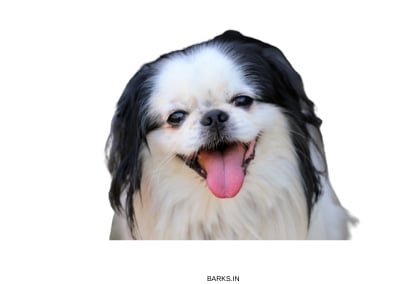
The Japanese Chin (Japanese: 狆, Chin) is a steadfast Japanese breed of dog. They are a small-sized dog that predates most modern dog breeds. The Chin is a lap and a royal companion dog.
History and origin
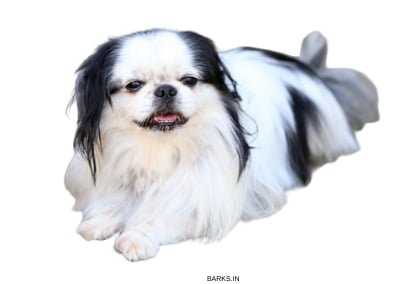
Like all the ancient dogs, it is difficult to pinpoint the precise beginnings of this dog. There are several schools of thought about the origins of the Chin. Some experts believe that these dogs originated in China. Given as gifts from the Chinese royalty to the Japanese. Others claim that the Chin came to Japan as gifts from the Korean royalty.
The purpose of the Japanese Chin

For several hundred years, the Japanese Chin has enjoyed a royal lifestyle. This dog was the queen’s pet, living in royal chambers and accompanying royal ladies.
Lapdog
Small size, large round eyes, beautiful coat patterns, and excellent temperament made this dog a royal lapdog. These dogs possess a cat-like nature. They use their paws to wipe their face and keep themselves clean.
Traits

- Classification: AKC – Toy; UKC- Companion dogs
- Weight: 5 kg to 10 kg
- Height: 35 cm to 40 cm
- Coat: Straight, double-coat
The Japanese Chin is a toy breed. They are intelligent, alert, and with a lively character. They are small, and the average dog weighs no more than 4 kg.
The most distinctive feature is the feathering behind their ears and their captivating round eyes. This breed is also strabismus; in other words, their eyes don’t always align properly.
Temperament

The Japanese Spaniel has a lively personality. They are a good-natured dog and have a cat-like attitude. Known to prefer high places for resting, excellent balance, using its paws to clean its face, makes this dog more of a cat.
The Chin is independent when left untrained; they are prone to small dog syndrome and resource guarding.
Health
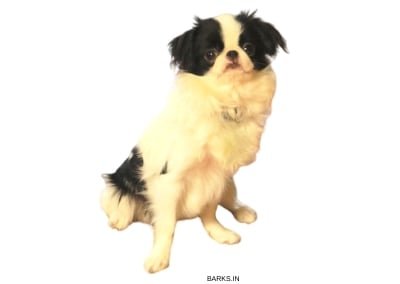
This dog is prone to the following health issues.
- Cataracts cause eye lenses to become cloudy and decrease the dog’s vision.
- Early-onset of heart diseases.
- Their flat face often results in eye and breathing issues.
Interesting facts

- The Chin is a royal companion dog, adapted to royal living.
- They are a strabismus breed of dog.
- Their flat face and short muzzle make them prone to eye and breathing issues.
The Shikoku

The next dog in our list of beautiful Japanese breeds of dogs is the sturdy and agile Shikoku (Japanese: 四国犬, Shikoku-ken). This dog is a medium-sized dog from the Shikoku island.
The Shikoku Inu is another Spitz-type dog from Japan with a medium-sized straight outer coat and a dense inner coat. The Shikoku size is smaller than the Akita, and they are larger than the Shiba Inu.
Like the Shiba Inu, Shikoku Inu is a hunting dog from the Kochi Prefecture. This dog is a Japanese boarhound.
The purpose of the Shikoku Inu

The Shikoku Inu originates from the mountainous regions of the Kochi Prefecture. Alpine origins gave this dog a rugged and sturdy build. People relied on this dog for hunting bush meat.
Hunting Dog
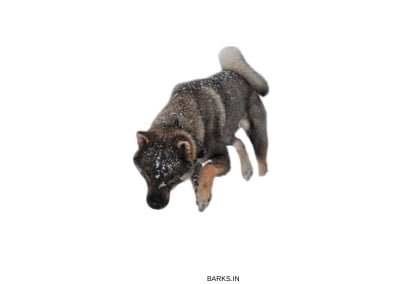
The Shikoku Inu is a hunting dog. People in the Shikoku island use this dog for hunting game such as the deer and the wild boar. The Shikoku Inu is renowned for its sturdiness, courage, and agility.
These dogs can flush out deer and wild boars towards the hunters. When on the hunt, these dogs are similar to foxes. They use their excellent sense of smell to pinpoint game.
Traits
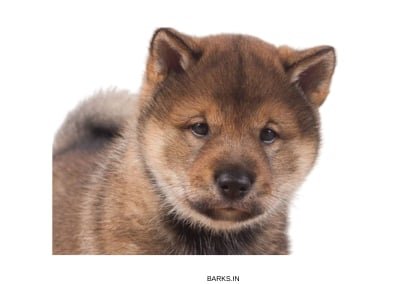
- Classification: AKC – Unrecognized FSS; UKC- Northern Breed
- Weight: 15 kg to 25 kg
- Height: 40 cm to 45 cm
- Coat: Straight, double-coat
The Shikoku Inu is a Spitz-type, medium-sized hunting dog. The average weight ranges from 15 kg to 25 kg, and larger dogs are preferred. This dog has a square-shaped body, a wedge-like head, with erect ears.
This dog has three regional variants. They are.
- Awa
- Hongawa
- Hata
All of these dogs are found only on the Shikoku island.
Temperament
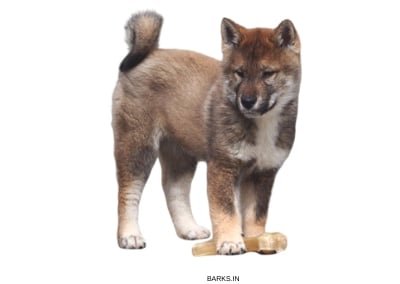
The Shikoku Inu has an independent nature. Bred for hunting, these dogs are robust, built to chase game through mountainous terrain. The Shikoku is not a dog for the novice dog owner. These dogs require experience and leadership.
Health

This dog is a healthy breed of dog. The following health issues occur in this breed.
- Hip dysplasia is a painful condition that affects the dog’s back.
- Cataracts cause eye lenses to become cloudy and decrease the dog’s vision.
- Joint and muscle issues are also prevalent in this breed.
- This dog is prone to a bone condition called the Luxating Patella.
Interesting facts
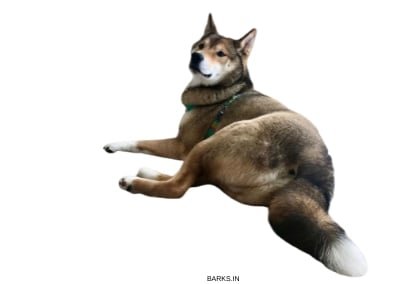
- The Shikoku Inu is a Japanese boarhound.
- This dog has three regional variants. They are the Awa, Hongawa, and Hata.
- The Shikoku Inu is exceptionally agile and is capable of running through challenging terrain.
Sanshu Inu

The Sanshu Inu is a Spitz-type Japanese breed of dog. Unlike the other Japanese dog breeds, the Sanshu Inu is not a distinct breed. This dog is a mixed breed, a cross between the Chinese Chow Chow, the Akita Inu, and other Japanese Spitz.
History and Origin of Sanshu Inu

In the early 1900s, Japan opened its doors to the world. Dogs from different parts of the world started arriving in Japan. Breeders started cross-breeding native dogs with non-native dogs. This cross-breeding decimated the native dog population.
The Sanshu Inu is an outcome of such an exercise. In 1912, Japanese breeders crossed native Japanese dogs with the Chinese Chow Chow. They wanted to produce a large, intelligent dog that combined the strength of the Chow Chow and the intelligence of the native dogs. Sanshu Inu was the result.
The modern Sanshu is not big, breeders through selective breed for smaller size and intelligence.
The purpose of the Sanshu Inu
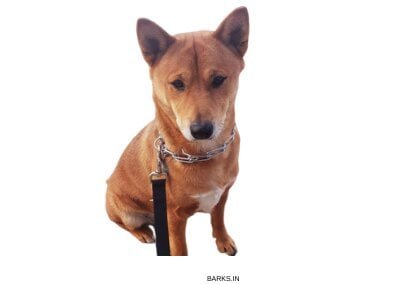
The Sanshu Inu serves two purposes.
Guard dog
This dog is an excellent guard. They are trainable, intelligent, and alert. Like their ancestor, the Chow Chow, the Sanshu Inu is protective of its home and property.
Companion dog
The Sanshu Inu is also an excellent companion. Early socialization helps them adapt to the human lifestyle. They are trainable and affectionate dogs.
Traits

- Classification: Unrecognized by any major Kennel Club
- Weight: 15 kg to 25 kg
- Height: 40 cm to 45 cm
- Coat: Straight, double-coat
The Sanshu Inu does not conform to a standard breed description. Dogs from different regions vary in size and appearance. They are a medium-sized Spitz-type dog.
Temperament

The Sanshu Inu is an affectionate dog. They are protective of their home, master, and property. They are intelligent dogs and are easily trainable. The Sanshu Inu is rare, and breeders believe only a few dogs remain.
Interesting facts
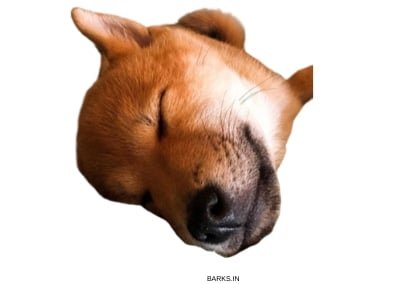
- The Sanshu Inu is a modern mixed breed of dog developed in Japan in 1912.
- The Chinese Chow Chow, Akita, and other dogs were the ancestors of the Sanshu Inu.
- This dog is rare and is expensive to buy.
- The Sanshu Inu does not conform to any standards. They vary in size considerably from one region to another.
Hokkaido Inu (Ainu)

The Hokkaido (Ainu) (Japanese: 北海道犬, Hokkaidō-ken) is the next Japanese breed of dogs on our list. This dog is a medium-sized, Spitz-type dog from Japan.
This dog is a typical Spitz, medium-sized, triangular and erect ears, and double-coated. In ancient times the Hokkaido was a hunter and a guide. They have a remarkable homing ability. Breeders in this dog’s native tract talk about Hokkaido’s ability to traverse great distances to find their home.
History and Origin

Hokkaido is another ancient dog from Japan. These dogs descended from medium-sized Spitz like dogs from the island of Honshu. Thomas Blakiston, an English explorer who visited Japan in 1869, observed that the dogs in Hokkaidō, Japan’s northern island, were related to northern Asian species. He named this dog the Hokkaido.
The purpose of the Hokkaido Inu
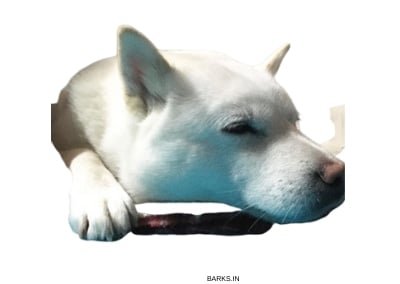
The Hokkaido is an ancient dog that lived with people on the Northern island.
Hunting dog
The Japanese people relied on this dog for hunting. Unlike the sighthounds of the plains which coursed game, these mountainous dogs flushed game. This dog is hardy, agile, and has an excellent sense of sight and smell. They can smell rabbits in their borrows and flush out birds that nest in the brush.
Guide dog
The Hokkaido can find its home even when it is 100s of kilometers away. They have a remarkable homing ability. Experts believe this dog remembers landmarks, scent, and other features to find their way back home.
Hunters when they travel long distances for food, take these dogs along. The hunters rely on the Hokkaido’s ability to bring them back home.
Companion dog
The Hokkaido is an excellent companion dog. Today, people use them as family pets. They are a spirited dog.
Traits
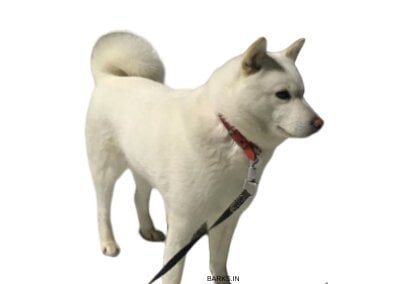
- Classification: AKC: FSS; UKC: Northern Breeds
- Weight: 20 – 30 kg
- Height: 48 – 52 cm
- Coat: Double-coat
The Hokkaido is a medium-sized, hunting Spitz from Japan. This dog is a hunting dog, that is agile, and of a sturdy build. Like all the Spitz-type dogs, this dog has a double-coat. The outer coat is straight and coarse. Their inner coat is dense and helps them keep warm through cold winters.
Temperament
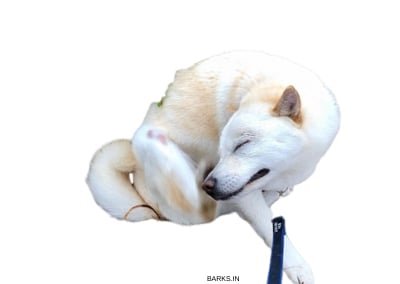
The Hokkaido Inu is a healthy breed of dog with few ailments. The average life span for the Hokkaido ranges between 12 to 15 years. The following are a few health issues observed in this breed.
- Collie eye anomaly (CEA) is prevalent in this breed. One in three dogs suffers from this issue.
- This dog is prone to Seizures. This severe condition affects the dog’s nervous system and requires immediate medical attention.
- Pica is a behavioral issue in which dogs tend to eat anything compulsively. The Hokkaido is prone to this ailment.
Interesting facts

- Hokkaido is a brave dog known to take on bears and boars in defense of their master.
- This dog has a remarkable homing ability and can find their home through long distances.
- This dog is a hunting dog with exceptional cold-weather adaptation.
- Hokkaido’s style of play is unlike other dogs. Their games are similar to how these dogs hunt, crouching and lurking.
Kishu Ken

The Kishu Ken (Japanese: 紀州犬, Kishū-Inu) is a medium-sized hunting dog from Japan. This dog looks similar to the Hokkaido dog. People often mistake this dog as white Hokkaido dog.
The purpose of the Kishu Ken

The Kishu Ken is an ancient hunting dog from the Kishu region of Japan. Hunters used this dog for hunting boar and deer. Unlike sighthounds, this dog uses stealth to stalk their prey.
Kishu dogs use a wide variety of vocal signals to alert its master once it spots it. They are quite in a hunt, seldom barking. The mountainous regions where this dog hunts, amplifies sound. Hence, this dog uses stealth to track down its prey.
Traits
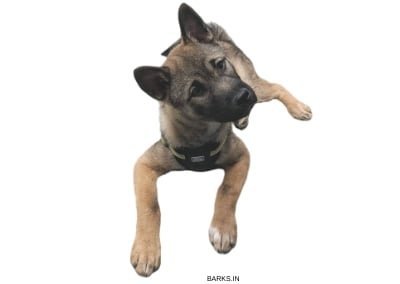
- Classification: AKC: FSS; UKC: Northern Breeds
- Weight: 20 – 27 kg
- Height: 45 – 52 cm
- Coat: Double-coat
The Kishu Ken is a beautiful, medium-sized Spitz. The breed standard mandates a solid color dog, mixed-colors are a disqualification. They are white, red, sesame. Black & Tan coat colors are permitted only in NIPPO.
The Kishu Ken has a wedge-shaped head with erect ears. They are a Spitz, with a square-shaped body.
Temperament
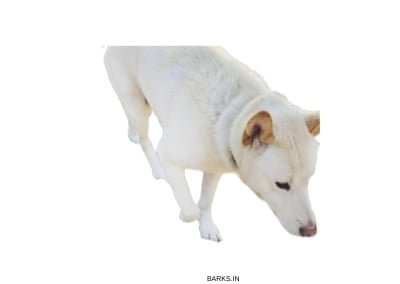
The Kishu Ken is a one-person dog. They are independent, dominant, and aloof. A novice or a first-time dog owner will not be able to handle this dog.
Kishu Kens are also headstrong and territorial and does not tolerate other dogs in its territory. Males are aggressive towards unfamiliar dogs.
Health

The Kishu Ken is a rare breed of dog, rarely seen outside its native breeding track. Information about the dog’s health is hard to find. The KoiraNet, Finnish health database records the following.
- The Kishu Ken is prone to hip dysplasia. This condition affects the dog’s hips and causes severe pain.
- This dog comes from some of the cleanest places on our planet. They are prone to skin and food allergies. Japanese breeders rely on traditional home remedies to cure their dogs.
Interesting facts
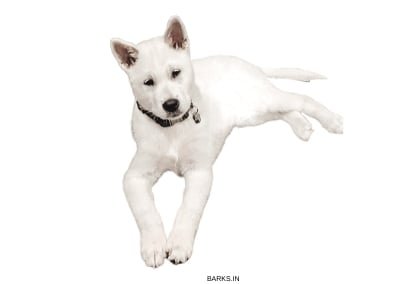
- The Kishu Ken looks similar to the Hokkaido dog. People often call this dog as the white Hokkaido dog.
- These dogs are quiet while hunting. They rely on stealth to stalk their prey and seldom bark.
- The Kishu Ken is headstrong and is not a dog for novice owners.
Kai Ken (Tora Inu)

The Kai Ken (Japanese: 甲斐犬) is a medium-sized brindle dog. The Kai Ken is often called the Tora Inu or the Tiger dog because of its brindle markings. This dog is a rare breed of dog and considered a living national monument in Japan.
The Kai Ken and the Kombai dog of India are the only two breeds of dog to be named after the tiger.
History and origin
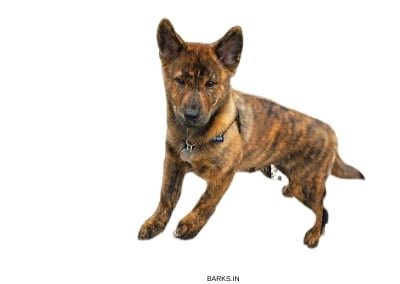
The Kai Ken is descendent of the ancient Nihon Ken, a native Japanese landrace. The Kai Ken is from the Kai Province in Yamanashi Prefecture of Japan. The precise origins of this dog is still a mystery.
The purpose of Kai Ken
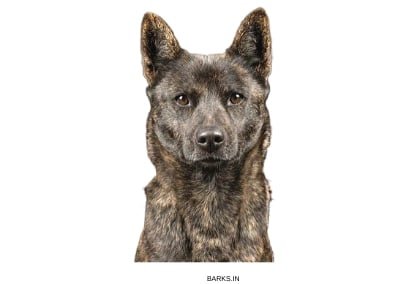
Kai Ken is a hunting breed of dog. For many generations, this dog has served the Japanese people by being a capable hunter. They are medium-sized, agile, and excellent climbers. The Kai Ken is known for its ability to climb trees to observe prey from long distances.
Traits

- Classification: AKC: FSS; UKC: Northern Breeds
- Weight: 20 – 25 kg
- Height: 50 – 55 cm
- Coat: Double-coat with brindle markings
The Kai Ken is a medium-sized hunting dog. They are a rare breed in their native land. Agile, fast, stealthy, and excellent sense of sight and ears makes them a worthy hunter.
This dog is also called the Tora Inu or the Tiger dog due to its brindle markings. Puppies are born with a solid color. The brindle markings become prominent only as the dog matures.
Temperament
Kai Ken has an excellent friendly character. They are good with family and kids. Like most Japanese dogs, the Kai Ken is devoted and loyal to its family. These dogs are wary of strangers and make excellent guard dogs. They are agile and active.
Health

The Kai Ken is a healthy breed of dog with few health issues. They are well suited for a rugged lifestyle.
- Kai Ken is prone to allergies. These dogs lived in some of the cleanest environments of our planet. Hence, they suffer allergies when they enter the modern polluted world.
Interesting facts
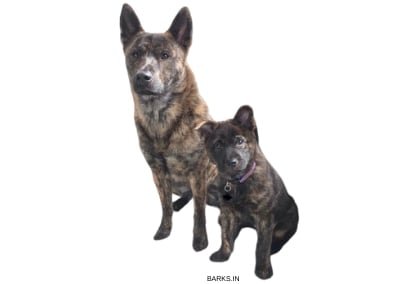
- Kai Ken is the tiger dog due to their tiger-like markings. The Pulicharal Kombai of India is another dog that gets its name from tiger-like markings.
- Kai Ken can climb trees like a cat while they stalk their prey.
- Kai Ken is a loyal dog that forms deep and lasting bonds with his family.
Tosa Inu

The next dog in our list of Japanese dog breeds is the Tosa Inu. Tosa (Japanese: 土佐) is a large breed of dog to originate in Japan. The Tosa is also called the Japanese Mastiff.
In the early 19th century, Japan opened its doors to the world. Several dogs from the West arrived in Japan. Breeders started cross-breeding native Japanese dogs with dogs from West resulted in the Tosa Inu.
History and origin

The Tosa Inu is a modern dog bred in the 1900s. This dog was the result of cross-breeding the native Shikoku Inu with several large breeds of dogs, such as.
Traits
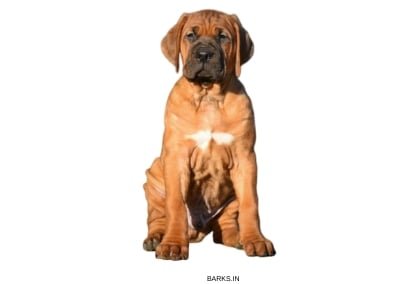
- Classification: AKC: FSS; UKC: Mastiff
- Weight: 40 – 60 kg
- Height: 62 – 80 cm
- Coat: Single smooth-coat
The Tosa or the Japanese Mastiff is a large breed of dog from Japan. The Tosa is twice as large as Akita. Some Tosa’s are giant-sized. 91 kg was the heaviest Tosa Inu ever recorded.
Temperament

Tosa Inu is a Mastiff type dog. They are stubborn, dominant, and powerfully built. Tosa Inu requires experienced handlers to manage them. Training must commence from the puppy stage else; they can quickly become unmanageable.
Health
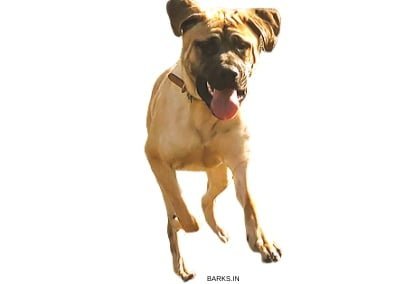
Tosa Inu is a healthy breed of dog. They are prone to health issues that are common to large breeds.
Interesting facts
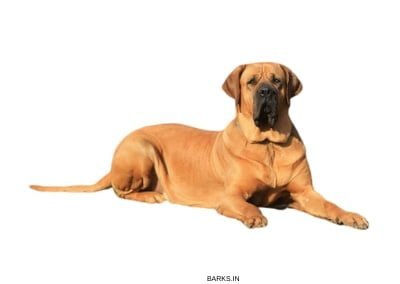
- Breeders used as many as seven different dog breeds to develop this dog.
- Sadly people pit Tosa Inu in illegal dogfights.
- Tosa Inus require experienced handlers. They are not dogs for novice dog owners.
Japanese Terrier
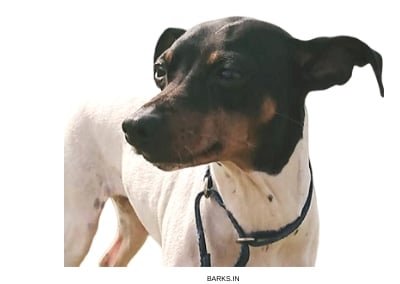
The Japanese Terrier (Japanese: 日本テリア, Nihon Teria) is a small breed of Terrier type dog from Japan. This dog is rare, even in Japan. The Japanese Terrier serves as an excellent companion and great with kids.
History and origin
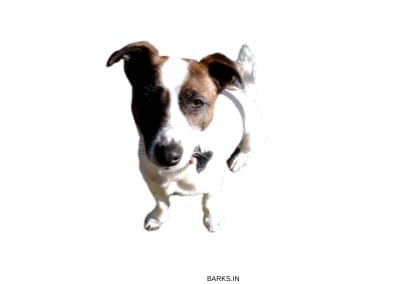
The Japanese Terrier originates from the English Fox Terriers. In the 17th century, it was a common practice to use small Terriers in ships to control the rodent population. Seafarers preferred smaller dogs as they are easy to care for in long voyages.
Experts believe the Japanese Terrier reached Japan in Dutch vessels that frequented the port of Nagasaki. The precise history of how these dogs arrived in Japan is unknown.
The purpose of the Japanese Terrier
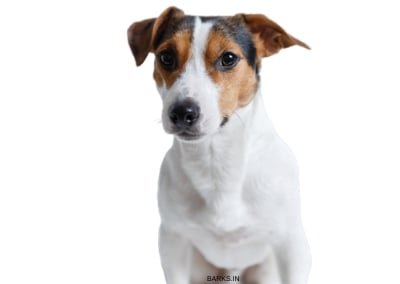
The Japanese Terrier in Japan is not a vermin hunter. Their small-size, excellent temperament, and lively character made them lapdogs in Japan. These dogs are famous in places near ports.
Traits
- Classification: AKC: FSS; UKC: Northern Breeds
- Weight: 3 – 5 kg
- Height: 20 – 30 cm
- Coat: Single smooth-coat
The Japanese Terrier is a small-sized dog from Japan. They have a square-shaped body, a wedge-shaped head, and an erect tail. The Japanese Terrier, unlike all other Terriers, is not a vermin hunter.
These dogs in Japan enjoy a non-working lifestyle. They are a sought after companion and lapdog.
Temperament
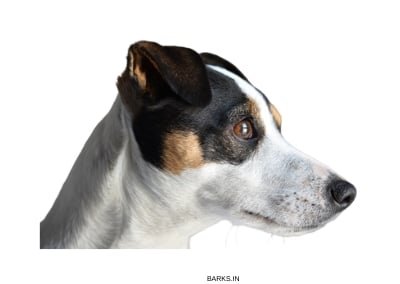
The Japanese Terrier is active, energetic, and has a pleasant personality. They are great with the family, patient with kids, and accept other pets. JTs can read their master’s mood and will change their behavior accordingly. These traits make them an exceptional companion dog.
Health
- Japanese Terriers are susceptible to eye issues.
- With a restricted gene pool and a lack of genetic diversity, these dogs today face numerous genetic disorders.
Interesting facts

- The Japanese Terrier is an excellent companion dog. They can change their behavior based on their master’s mood.
- Japanese Terriers have English Fox Terrier ancestry. Experts believe these dogs arrived in Nagasaki in the 17th century.
Ryukyu Inu
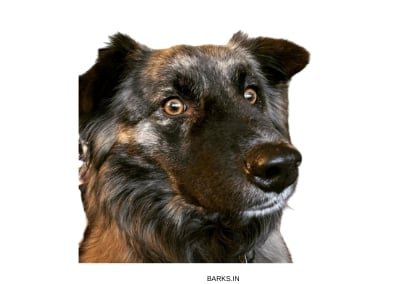
The Ryukyu Inu (Japanese: 琉球犬) is a native Japanese breed of dog. Many experts believe this dog to be a landrace; there is little evidence of selective breeding in this dog. The most notable feature of this dog is that they still have their dew claw intact on their rear foot.
History and origin
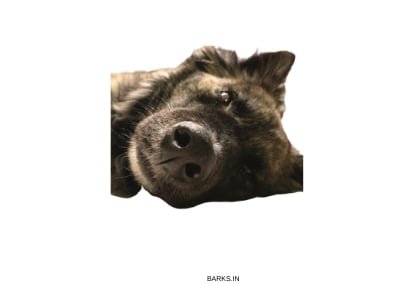
There is little or no information about Ryukyu Inu’s beginnings. Some believe these dogs were descendants of the first dogs to reach Japan, Nihon Ken.
These dogs look similar to Kai Ken, but they are a distinct breed of dog. These dogs originate from the Okinawa of Japan. Okinawa is a tsunami-prone area; despite this, these dogs have survived for several generations.
The purpose of Ryukyu Inu
This dog is a pack hunter. People use three or four dogs in hunts. The Ryukyu has an excellent sense of smell and is capable of tracking down injured Ryukyu Wild Boars. Ryuku Inus are also courageous dogs and is not afraid to stand its ground against wild boars.
Traits

- Classification: Unrecognized
- Weight: 20 – 25 kg
- Height: 50 – 55 cm
- Coat: Double-coat with brindle markings
The Ryukyu is a medium-sized dog from Japan. These dogs have a square-shaped body, erect ears, and a wedge-like head. The Ryukyu has powerful jaws, capable of inflicting severe damage to tough animals like the wild boar.
Temperament
Ryukyu Inu’s has a lively and spirited attitude. These dogs are specialist pack hunters, capable of intelligent coordination during hunts. Being an ancient dog, these are independent and will require extensive training to suit the city lifestyle.
Health

- Ryukyu Inu is prone to food and environmental allergies.
- This dog, owing to its active lifestyle, is prone to muscle and skeletal issues.
- They are also prone to cuts and bruises.
Interesting facts
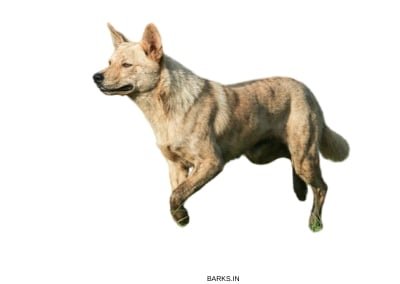
- Ryukyu Inu can climb trees. Some people believe these dogs climb trees to escape for tsunamis.
- This dog is extremely rare and inching towards extinction. 2015 census found only 400 dogs.
- Ryukyu have powerful jaws and are capable of inflicting severe injuries to large animals such as the wild boar.
Sakhalin Husky (Karafuto Ken)
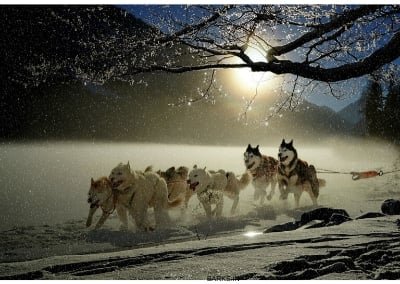
The Sakhalin Husky is an almost-extinct breed of sled dogs from Sakhalin. These dogs hit international fame through the ill-fated Antarctic expedition of 1958.
The expedition left behind 15 Sakhalin Huskies when the weather turned bad. The expedition team was unable to return to rescue these dogs. Nearly a year later, when the team finally visited Antarctica, they found two dogs, Taro and Jiro, alive. Eight Below is a fictional Hollywood movie about these dogs.
History and Origin
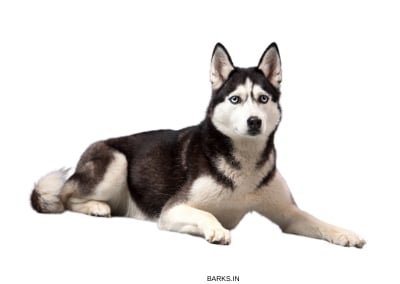
The Sakhalin Husky is an ancient Spitz-type dog from Sakhalin. This native Nivkh people bred and used this dog for winter transport. The Russian armed forces and the Japanese used these dogs to pull sleds.
The Nivkh people used this dog not only for transport, but these people also used the dog’s fur as winter clothing.
Traits

- Classification: Unrecognized
- Weight: 25 – 30 kg
- Height: 50 – 55 cm
- Coat: Double-coat
The Sakhalin Husky is a medium-to-large sized dog bred for pulling the sled. These are powerful dogs, and a single Sakhalin Husky can pull 70 kg with ease.
The Russian army relied on this dog for transport. Sakhalin Husky’s large padded feet enable them to run through the snow. Their dense double coat offers these dogs excellent protection from extreme temperatures.
Interesting facts
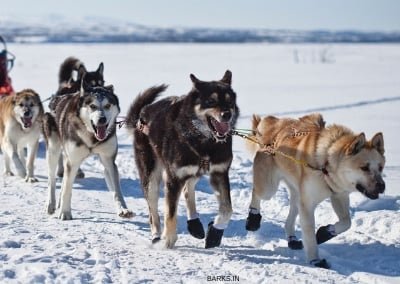
- The Sakhalin Husky is an almost-extinct sled dog from Sakhalin.
- The Russian and Japanese army relied on these dogs as a means of winter transport.
- The 1958 Antarctic expedition left behind 15 sled dogs for a year. Only two dogs survived, Taro and Jiro.
- Several movies about these dogs have hit the screens.
Conclusion: Japanese dogs
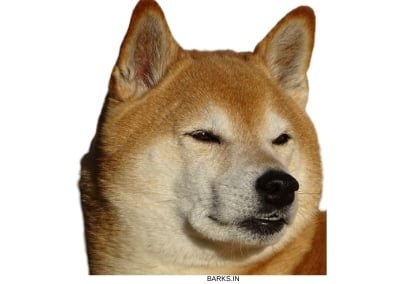
Japanese dogs are both ancient and remarkable. It is delightful to see a close and intimate relationship between people and dogs in Japan. One cannot and must not forget dogs like Hachikō or the heroic survival of the Sakhalin Huskies.
The native Japanese dogs are truly amazing. Japan has some of the world’s most beautiful spitz dog breeds. These dogs resemble the wolves from which they originate. Long muzzle, pointy ears, round black eyes, and beautiful coat colors are the hallmarks of these dogs. In Japan, these dogs are a national treasure.

